Back pain. Two words are enough to make many of us cringe with memories of heat pads, pain killers, sleepless nights and days of uncomfortable activities.
But, how frequent is back pain and is it always so troublesome?
The reality is that back pain is one of the most common ailments in the world and, in the UK alone, a frequent yearly consultation in about 16% of the population.
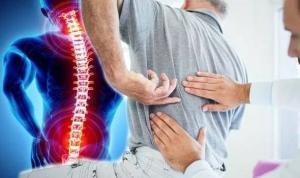
Back pain can occur in people of all ages and is currently the leading cause of disability in the world.
But don’t worry, there is plenty that can be done to prevent it.
Let’s learn more about the Back Pain Rehabilitation Process and how you can get started with the programme from a specialist in London.
Learn how Hayley, Jan, Dr Christian, Michaela, Elizabeth Tiffany , M Taylor and Franco successfully rehabbed their back injuries and beat their back pain.
What to expect from back pain rehabilitation sessions?
Did you know that back pain is not a disease in itself but rather a symptom?
This means that back pain, like a cough or a fever, can be associated to many different causes and manifest itself differently each time.
Whether you are starting the programme because you are experiencing back pain or because you have suffered from it in the past, the most important element of any rehabilitation session is a comprehensive assessment.
An initial evaluation is used to determine your overall health state.
It includes questions about your:
- medical and back injury history,
- occupation,
- recreational activities,
- activity levels, and
- physical activity programmes in which you participate regularly etc.
Questions like when did the symptoms start?
How long have you been experiencing them?
Is it always the same or does it change throughout the day or depending on the activity performed? are key to identify red flags that a more serious underlying condition could be causing your pain.3
A comprehensive back injury assessment provides an overview of activities that might be triggering your back pain and allow for specific recommendations to be made.
In some instances, a series of physical and neurological tests will be performed in order to determine whether an exercise is suitable for you or not.3
After a thorough movement and exercise evaluation is completed,our spine treatment expert can determine the appropriate way to begin your exercise rehab programme taking the following aspects into account:
- An evidence-based programme: Every rehabilitation programme offered is based on your assessment and is continuously modified live by further assessing whilst training.
This means that as your symptoms and physical condition improves, different rehab exercises will be added to provide new opportunities for your body to adapt to.
- Extra precautions: Everyone is different.
With a different age, physical fitness level, occupation and lifestyle it is important to be aware of any special conditions that will put you at risk and take any extra precautions necessary.2
- Customisation and correct exercise awareness: Individualisation is probably the most important pillar when prescribing exercise.
Our rehab programme sessions are designed specifically for you and are based on the needs and objectives found while assessing.
Likewise, using the correct form for each exercise is emphasised as it is key to obtaining the desired benefits on muscles, joints, body structure and posture.3
- Safe progressions: Starting with an exercise that is too easy or too challenging can hinder the rehabilitation process.
Your exercise programme will determine the best place for you to get started and during your sessions, continuous live assessments will determine when your body is ready to progress to a more challenging exercise safely.
- Advanced back rehabilitation sessions: Once a good rehabilitation programme baseline has been established and carried out for some time, a more advanced programme is offered to potentiate the benefit of exercise on your body.
Want to know how your back is doing?
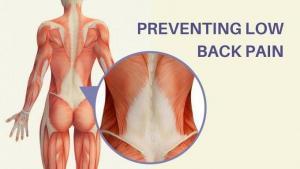
Call now for a FREE CONSULTATION by one of our Experts in Spinal Treatment in London.
How will exercising help me with my back pain?
There are countless ways in which exercise benefits not only your overall physical fitness and body regulatory systems but also your mood and your tolerance to pain.
Here are some of the main benefits of incorporating an exercise programme to your daily life:
- improve flexibility,
- strength,
- endurance,
- balance,
- neuromuscular control, and
- fitness.
Physical fitness is a well-known predictor for mortality and appearance of chronic diseases on a long-term basis.
In the elderly population,physical fitness is a predictor of quality of life, propensity of falling and independence and functionality in activities of daily living.
Daily exercise can dramatically improve the outcomes of many functional tests as well as life expectancy and fitness levels at all ages.1,4,5
- Reduce the risk of other health problems and comorbidities.
Did you know that most adults do not fulfil the 30 daily minutes of exercise recommended?
Heart problems, diabetes and obesity are commonly associated with chronic back pain.
A simple 30-minute workout is enough to reduce your risk of many chronic diseases associated to sedentarism.1
- Improve the tolerance of painful chronic conditions, mood and mental well-being. When we exercise, the increase in blood flow and nutrients also increases the body’s production of different hormones like endorphins.
This chemical produced in the brain binds to an opiate receptor in the pain control system in the brain and spinal cord which decreases the perception of pain.
In many ways, endorphins can mimic the effects of commonly prescribed drugs like morphine and codeine but in a natural way. 1
This generates an overall feeling of happiness and wellbeing that lasts for a few hours.
- Improve your lumbar stability, mobility and posture. It is frequently mentioned that bad posture is a cause for back pain but most modern studies now show that there is no such thing as “bad posture”.6
Posture relates to the adaptations in our muscles and joints that allow us to remain upright and functional.
A “bad posture” is one to which the body is exposed to for prolonged periods of time and developed to cope with postural challenges.
Pain can change out posture, mobility and stability as the body normally avoid situations that provoke pain both consciously and unconsciously.
- Reduce fear of movement.One of the biggest fears of anyone who suffers from back pain is making it worse.
This usually causes them to avoid exercise and movement even when they might not be triggering the pain or worsening the symptoms.
An exercise back pain rehabilitation programme that is well designed will not cause pain which will in turn encourage everyone to continue moving as the symptoms start to disappear and the problem resolves.1, 4
Exercising has never felt this good!
With a routine that is customised and specific to your goals and needs, improving you back health can be a wonderful activity. 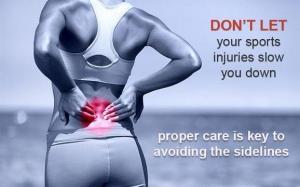
Call now for a FREE CONSULTATION and get started on your own back pain rehabilitation programme in London.
Should I continue my exercises at home?
The most important element of any back injury rehabilitation programme is customisation and consistency.
Exercise can have amazing results in controlling and preventing future back pain but it must be done in a consistent manner.
The body responds and adapts better to a consistent stimulus provided daily than to a prolonged exposure.
Likewise, a one-hour exercise routine is not enough to counteract the effects of a sedentary lifestyle.
This means that constant movement throughout the day, small breaks at the workplace and stretching along with a daily routine of specific rehabilitation exercises will be the best approach to dealing with back pain.5,6,7
Since the cause of back pain is often unknown and complex to diagnose, the only way to determine an effective back pain rehabilitation programme is to safely expose the body in a smart, customised manner to different stimuli.
This can determine what works and what doesn’t in a safe manner.
Although a certified professional knows all the bases and evidence for exercise prescription only you know how and what your body feels when exercising and constant repetition will provide the tools for much needed feedback to customise your sessions.
Work on your exercises daily and soon you will see just how much your body is able to accomplish.
What should I do once the sessions are finished?
Chronic back pain is very debilitating when left untreated.1,5,8
Once your back pain rehabilitation sessions have ended you must be aware of the recommendations made by or spine rehabilitation experts and continue being physically active to prevent it from coming back.
Studies have shown that almost half of the cases of chronic back pain have a full recovery one year after the incident.2
What happens if my back pain comes back?
- Don’t panic!Most patients with acute back pain might have a favourable prognosis.2,8If your back pain is back,try to identify any change in activities or any situation that might have triggered it or made it worse.
Remember to avoid activities that worsen then pain for a couple of days but be sure to continue with your exercise programme as long as the exercises do not hurt.
Remember that in most cases no specific cause can be found as the root of the problem, making back pain an extremely frequent problem and one that is likely to happen from time to time throughout our adult lives.
With a variety of different causes, prescribing a therapeutic rehab program that works since day one is difficult which is why constant live assessment will be key in your recovery. 1
As alarming as the symptoms may be, most cases of sudden back pain are relatively simple and will self-resolving problem within a few days or weeks.1,2,8
- Control your pain! There are many ways to control your back pain.
If your back pain is intense you can user over-the-counter non-steroidal anti-inflammatory drugs (NSAIDs) for some relief.
It is important to remember these can be associated to renal, cardiovascular and gastrointestinal effect which is why they are only recommended for short periods of time.3,7
Applying a heat pack in the area for 10 to 12 minutes can provide some temporary relief.7.8
Stretching lightly after seating for prolonged periods of time can help if you feel like you can’t move freely.
Also, a visit to an elite personal trainer in London, injury rehabilitation expert or a physiotherapist as you can see in this research can provide some relief through techniques like massage and electrotherapy.7,8
- Exercise and stay active. We often think that rest will be the only way to relieve pain but most often than not, stopping physical activity will worsen the symptoms.1,3
If your back pain is back, try to continue with your exercise programme by doing the ones that do not cause pain.
Substitute high impact activities for light exercise or customised one-to-one Pilates exercises to remain active while the symptoms improve and try to return to your normal routine as soon as possible.
Remember that although back pain is not a pleasant experience but it is often not serious and will be resolved with time and movement.3
Living with frequent back pain can be a thing of the past.
If your back pain seems to never fully disappear contact us now for a FREE CONSULTATION by London’s Top Back pain rehabilitation specialist.
What exercises can I expect in my Back Pain Rehabilitation Programme?
One of the best parts of exercising is that the possibilities are endless!
There are countless exercises that can be used to work the different areas of the body associated with back pain.
Since, exercise rehabilitation programmes are individualised and based on the goals and lifestyle of each person some, or all, of the exercises listed below will likely be used during your sessions along with some of their variations and progressions.
Let’s learn some of the basics.
Front Sling: Anterior or front sling exercises refer to those that activate this muscular chain.
These sets of muscles that work in a chain allow us to stabilise our body while standing and perform other activities.
Start in a half kneeling position making sure both knees are bent a 90º angle.
Using a theraband or elastic band tied overhead perform a diagonal motion across your body maintaining your back aligned.
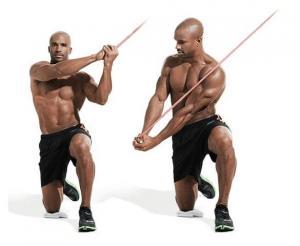
It is a rotation motion from your trunk and not just your arms.
Back Sling: Back sling exercises refer to the activation of the posterior chain or “back sling”.
These chains of muscles are designed to help our body stabilise and perform different actions while standing.
Grabbing a theraband or elastic band tied overhead, perform a hinge motion bringing your leg and arm on the same side towards your chest (at a 90º angle).
From this position, stretch your leg back and your elbow while keeping your back straight.
Single Leg Row: If you have balance problems be sure to do this exercise close to a wall or surface you can use to stabilise yourself.
While standing, lean forward while raising one of your legs until your back and raised leg are perfectly aligned (see photo below).
The trunk movement comes from the hip which means your knee must remain straight.
From this position.
Extend the arm from the same side as the raised leg.
Tightening your scapulae and keeping your body aligned perform a row bringing the dumbbell towards your chest slowly.
Make sure you are not rotating your body but simply pulling the dumbbell towards your chest and away from it.
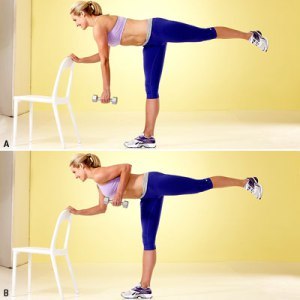
Trunk Rotation: Start on the floor on your knees and hands.
Make sure your shoulder, elbows and hands line up and keep your knees and hips at a 90º angle.
From this position, rotate your body (as seen on the photo) while raising your arm.
Be sure to distribute your weight evenly among the knees and hand on the floor.
Slowly return to the initial position and alternate to the other side.

Foam roller balance: Place a foam roller on the floor, parallel to your spine, and lay on it.
Raise your arm and opposite leg and bring them to your chest then slowly bring them down.
Alternate between both sides of your body.
Side Plank: Lay sideways on the floor.
Maintaining a straight line with your hip, back and neck prop yourself on your forearm like the photo.
Make sure your shoulder and elbow line up and create a 90º angle with the floor.
Your body should be as straight and lined up as possible.

If balance is difficult in this position you con place one foot in front of the other on the ground.
Why should you invest in certified personal trainer instead of going to a gym or simply exercising on your own?
Going to the gym or participating in different recreational activities can be wonderful to maintain an optimal physical condition.
However, when it comes to solving back pain, these activities might fall short or in some cases have the opposite effect.
A certified back specialist is the ideal professional to prescribe a back injury rehabilitation exercise programme catered to your needs and objectives.
With the proper training and experience to assess and guide you each step of the way, back pain can be a problem of the past.
Conclusion:
Back pain is one of the most frequent and debilitating symptoms in people of all ages, genders and nationalities.1,4,
The incidence of back pain is rising and is one of the most frequently associated causes of work absenteeism and disability worldwide.3,8
If you have suffered from back pain or continue to do so, there are many tools available to live a happier and painless life.
Our specialised back injury exercise rehabilitation programme is a marvellous tool that will not only improve your overall physical fitness but also work on many of the underlying causes of back pain.
With individualised and customised exercises sessions, constant live assessing and mentoring from exercise rehabilitation experts in spinal treatment you can make living with back pain in London a thing of the past.
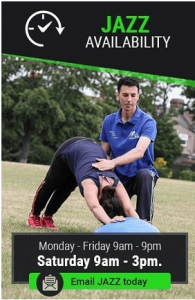
For your FREE CONSULTATION you can contact London’s Top back pain Rehabilitation specialist Jazz Alessi BY EMAIL or by telephone at 020 3633 2299 (Monday – Fri: 6:30 am to 9 pm – Saturday: 8 am to 3 pm) or go online for more information on back pain conditions, exercise rehabilitation procedures, and services offered https://www.personaltrainingmaster.co.uk/
References:
- Gordon, R.& Bloxham, S.;A Systematic Review of the Effects of Exercise and Physical Activity on Non-Specific Chronic Low Back Pain. https://www.mdpi.com/2227-9032/4/2/22/htm
- Clark, S. & Horton, R. Low back pain: a major global challenge.https://www.thelancet.com/journals/lancet/article/PIIS0140-6736(18)30480-X/fulltext
- Hayden, J., Cartwright, J., van Tulder, M.W., Malmivaara, A. Exercise therapy for chronic low back pain.https://www.cochranelibrary.com/cdsr/doi/10.1002/14651858.CD009790/full
- Oliveira, C., Maher, C.G., Pinto, R., Traeger, A.C., Lin, CW.C., Chenot, J.F., van Tulder, M., Koes, B. Clinical practice guidelines for the management of non-specific low back pain in primary care: an updated overview. https://link.springer.com/article/10.1007%2Fs00586-018-5673-2
- Shiri, R. Coggon, D., Falah-Hassani, K. Exercise for the Prevention of Low Back Pain: Systematic Review and Meta-Analysis of Controlled Trials. https://academic.oup.com/aje/article/187/5/1093/4557909
- Ingraham, P. Does Posture correction matter? https://www.painscience.com/articles/posture.php#sec_poor
- Hartvigsen, Jan & Hancock, Mark &Kongsted, Alice &Louw, Quinette& Ferreira, Manuela &Genevay, Stephane & Hoy, Damian &Karppinen, Jaro&Pransky, Glenn &Sieper, Joachim &Smeets, Rob & Underwood, Martin & Buchbinder, Rachelle &Cherkin, Dan & Foster, Nadine & Maher, Chris &Tulder, Maurits&Anema, Johannes & Chou, Roger & Woolf, Anthony. What low back pain is and why we need to pay attention. https://www.researchgate.net/publication/324245191_What_low_back_pain_is_and_why_we_need_to_pay_attention
- Foster, Nadine &Anema, Johannes &Cherkin, Dan & Chou, Roger & Cohen, Steven & Gross, Douglas & Ferreira, Paulo & Fritz, Julie &Koes, Bart & Turner, Judith & Maher, Chris & Buchbinder, Rachelle &Hartvigsen, Jan & Underwood, Martin &Tulder, Maurits& Cohen, Stephen & Costa, Lucíola& Croft, Peter & Woolf, Anthony. Prevention and treatment of low back pain: evidence, challenges, and promising directions.https://www.researchgate.net/publication/323920714_Prevention_and_treatment_of_low_back_pain_evidence_challenges_and_promising_directions



